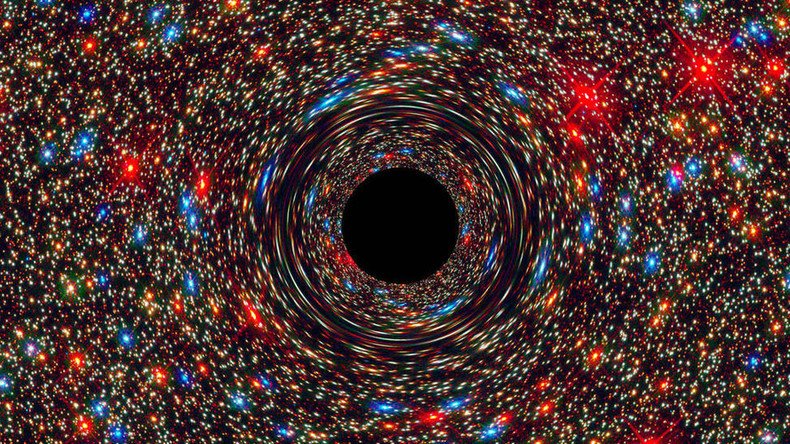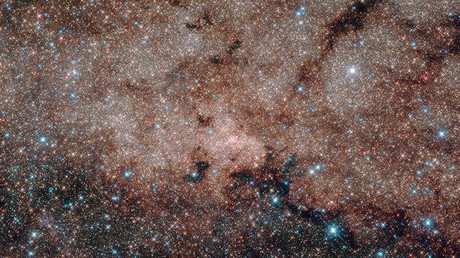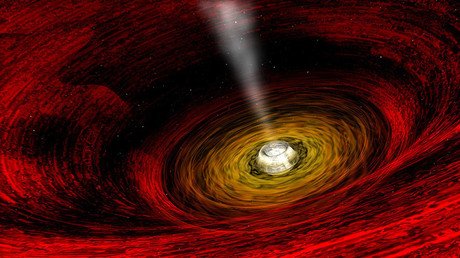Monster black hole in small galaxy group puzzles astronomers

Astronomers have stumbled across a near record-breaking monster black hole in a galaxy group where they least expected to find anything of the sort. The supermassive object weighs 17 billion suns, more than scientists could have predicted for its home galaxy cluster.
“The newly-discovered supersized black hole resides in the center of a massive elliptical galaxy, NGC 1600, located in a cosmic backwater, a small grouping of 20 or so galaxies,” said lead discoverer Chung-Pei Ma, a University of California-Berkeley astronomer, according to NASA.
The Hubble Space Telescope and the Gemini Telescope in Hawaii can claim credit for the finding, which is located about 200 million light years from Earth.
Not only the hole surprised astronomers, but also led them to suspect that there could be more such ‘monsters’ in the universe.
“So the question now is, ‘Is this the tip of an iceberg?’ Maybe there are more monster black holes out there that don’t live in a skyscraper in Manhattan, but in a tall building somewhere in the Midwestern plains,” Ma said.
The Manhattan analogy is not accidental here at all. In fact, it explains quite well the odds of finding a super-size black hole in a small galaxy group. Thus, a gigantic black hole is most likely to be found in a ‘crowded’ galaxy cluster, just like a skyscraper on Manhattan, and therefore less likely ‘in the universe’s small towns’.
"The researchers also were surprised to discover that the black hole is 10 times more massive than they had predicted for a galaxy of this mass," NASA reports.
Previous Hubble surveys of black holes led astronomers to draw a connection between a black hole’s mass and the mass of its host galaxy’s central bulge of stars.
However, this proportional estimate did not prove true in the case of NGC 1600.
“It appears that that relation does not work very well with extremely massive black holes; they are a larger fraction of the host galaxy’s mass,” Ma said.
The newly-uncovered black hole weighs 17 billion suns, which is not too far from a record, a black hole as heavy as 21 billion suns, ‘living’ in the crowded Coma galaxy cluster that consists of over 1,000 galaxies.
“The only way we found it was by measuring the velocities of stars near it, which are strongly influenced by the gravity of the black hole. The velocity measurements give us an estimate of the black hole’s mass,” Ma said, comparing the hole to “a sleeping giant.”
Astronomers think that this huge and heavy black hole was ‘born’ from black holes that merged long ago when galaxy interactions were more frequent.
When this happens, their central black holes settle into the core of the new galaxy and orbit each other.
After merging, the ‘newborn’ supermassive black hole continues to grow by ‘eating up’ gas funneled to the core by galaxy collisions.
“To become this massive, the black hole would have had a very voracious phase during which it devoured lots of gas,” Ma said.
Ma and her colleagues have reported their discovery in the April 6 issue of the journal Nature.














